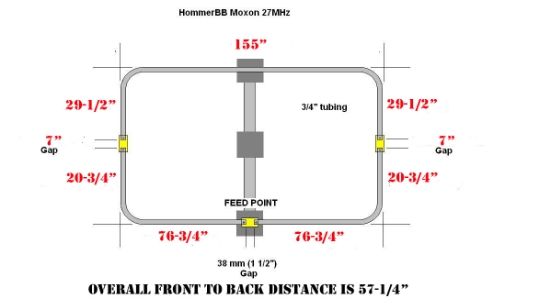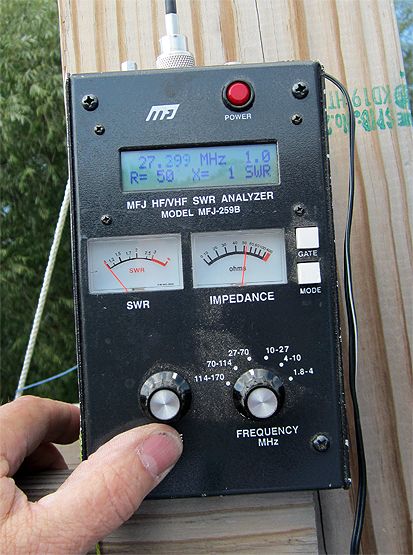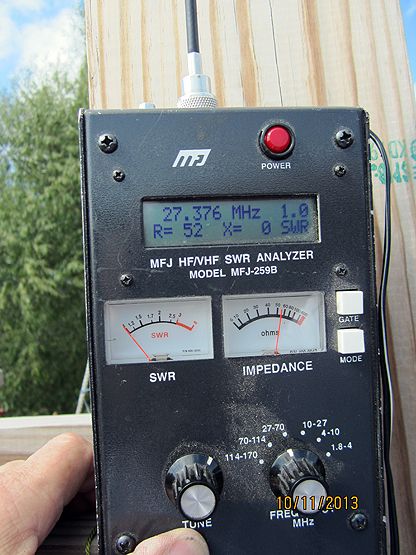Let me straighten this out.
1. when I built Moxon antennas I used the MoxGen application, a center frequency of 27.385, and I had to change the center freq from 27.385 to something higher to get an antenna that operated on center where i wanted it. MoxGen made both wire and tubing antennas lower down on the band than I wished.
2. when I posted the above two diagrams it was from an online calculator. I used a center frequency of 27.2 for the 11 meters dimensions and 28.4 for the 10 meters antenna. I know nothing of its accuracy.
3. I used 1/2" tubing for the metal antennas, and #14 wire for the wire antennas. I left the insulation on the wire antennas.
I believe the tubing antenna is more durable.
Here is the exact measurements of my Moxon I have up now. according to MFJ-259 it has a center frequency of 27.3.




1. when I built Moxon antennas I used the MoxGen application, a center frequency of 27.385, and I had to change the center freq from 27.385 to something higher to get an antenna that operated on center where i wanted it. MoxGen made both wire and tubing antennas lower down on the band than I wished.
2. when I posted the above two diagrams it was from an online calculator. I used a center frequency of 27.2 for the 11 meters dimensions and 28.4 for the 10 meters antenna. I know nothing of its accuracy.
3. I used 1/2" tubing for the metal antennas, and #14 wire for the wire antennas. I left the insulation on the wire antennas.
I believe the tubing antenna is more durable.
Here is the exact measurements of my Moxon I have up now. according to MFJ-259 it has a center frequency of 27.3.




Last edited:

